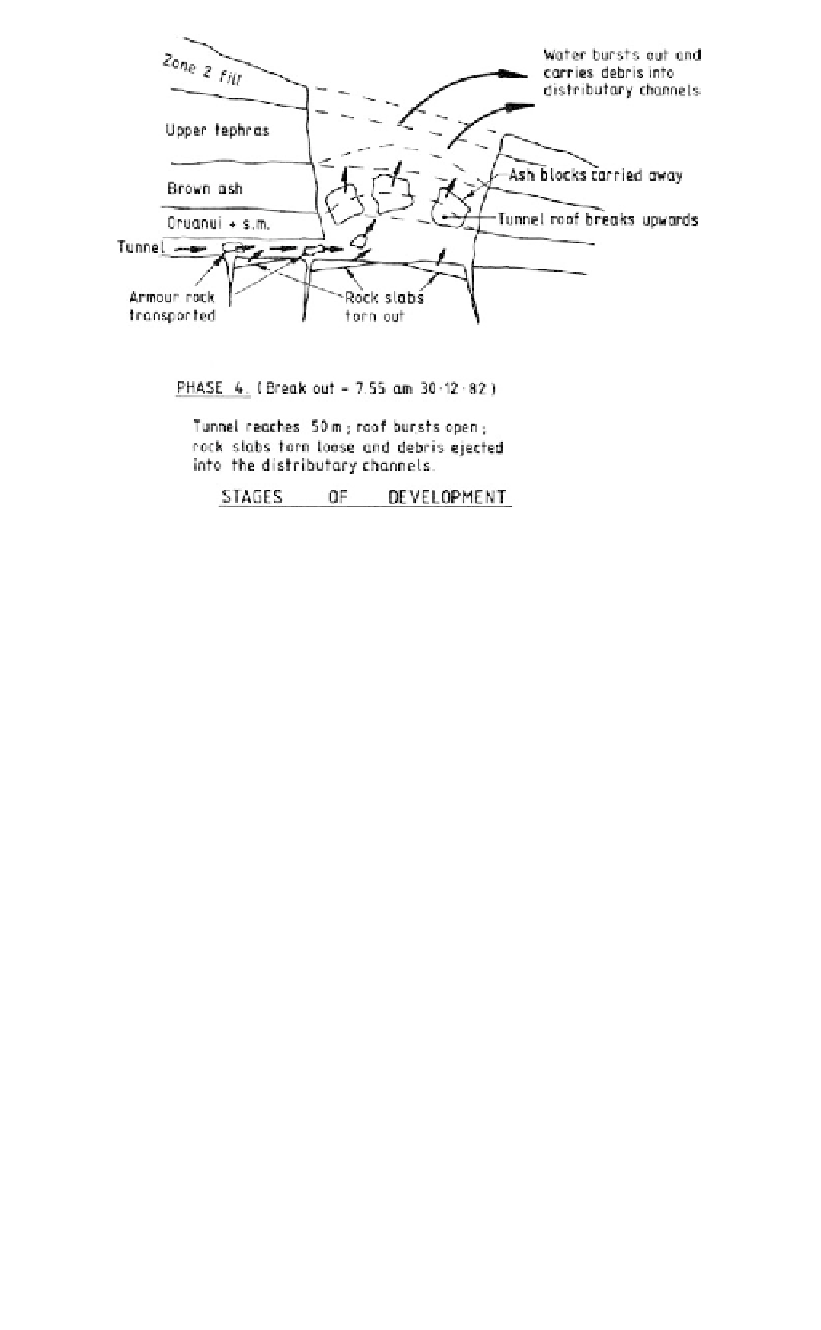Environmental Engineering Reference
In-Depth Information
Figure 3.11.
(Continued).
means of cement grout, the dispersive nature of the core material and large voids in the
rockfill shoulders which were formed by poorly graded very strong welded ignimbrite,
quarried from a columnar-jointed mass. Most blocks in the rockfill are of blocky shape
and in the range 300 mm to 600 mm (Section 3.2.2.1).
As with lavas, pyroclastic materials, especially those of Tertiary or younger ages, con-
tain glassy materials which may react with alkalis in Portland cement. They should there-
fore be tested thoroughly before use as aggregates in concrete (Section 3.2.6).
3.3.3
Pyroclastic materials - check list of questions
- Extreme variability?
-Very low
in situ
densities - collapse type behaviour?
- High
in situ
permeability?
- Brittle
in situ
and when compacted?
- Highly erodible
in situ
and when compacted?
- Highly to extremely sensitive zones?
- Complex groundwater distribution?
-Welded rocks: gaping joints?
- Columnar jointed welded rocks: poorly graded rockfill, quarrying problems?
- Interbedded lavas?
- Intrusive dykes, sills or plugs?
- Alkali-aggregate reaction?
3.4
SCHISTOSE ROCKS
Included in this group are those metamorphic rocks, e.g. slate, phyllite and schist which
have developed a pronounced cleavage or planar foliation. The cleavage or foliation results

